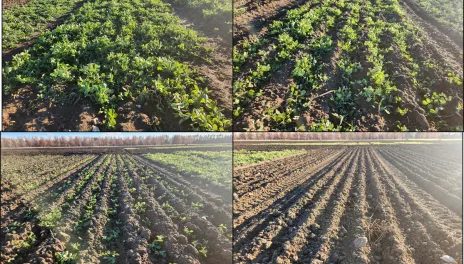What to expect from winter peas in North Dakota
Winter peas offer intriguing options for Northern Great Plains cropping systems. There are a number of potential advantages to having peas with a winter annual lifecycle. One is that you can essentially plant a fall ‘cover crop’ that can be harvested for grain the next season. Another is that the seeds are smaller than most spring pea varieties, meaning fewer pounds of seed per acre are needed during planting. Peas favor cooler conditions during the bloom period, and a winter annual pea will bloom earlier in the growing season, thus often avoiding higher temperatures.
But historically, winter peas have not been hardy enough for commercial production. Winter pea acres are increasing across the country, but what is their suitability for North Dakota?
Over the past four years winter peas have been planted at CREC as part of planting date and variety selection research. The goal has been to develop best management practices for winter peas in North Dakota. Over this timeframe, winter peas were planted between mid-August and early October each year, using both commercially available varieties and potential future varieties. The performance of winter peas has been wildly different each year. For instance, in 2023 there was nearly 100% survival of all pea varieties across all planting dates. The prior winter had abundant snow cover. However, in 2024 there was 100% mortality (winter-kill) in a mostly open and mild winter. In the other years, when the winter peas have had acceptable winter survival, they have matured one to two weeks prior to spring peas. Yields also tend to lag behind spring peas in our region, but they can be competitive with spring peas under the right conditions.
So, do winter peas have a fit in North Dakota? Planting winter peas as a cash crop in the fall is still risky. There is increased variety development work occurring with winter peas, and winter hardiness is a primary goal of much of the breeding effort. With better varieties, winter peas would be a very interesting option.
There is one more cash crop consideration for winter peas though. Winter peas do not have a strict vernalization requirement like winter wheat or winter rye. This means that winter peas can also be planted early in the spring in North Dakota and still flower and mature. We have not yet done research to compare performance and maturity of spring-planted winter peas against spring peas.
As far as cover crop use, winter peas can make a great addition to fall seed mixes or as a stand-alone. Winter peas can put on substantial biomass in the fall and naturally have good ground coverage to reduce erosion. If they survive until the spring, they can help jump start soil microbial populations and keep the soils covered for a large portion of the year (around six months including winter). With the smaller seed size, they would also be easier to mix with other species and require less volume to plant. If you have had success with winter peas as a cash or cover crop, we would love to hear about your experience!
Mike Ostlie, Ph. D.
Mike.Ostlie@ndsu.ed
Director and Agronomist
